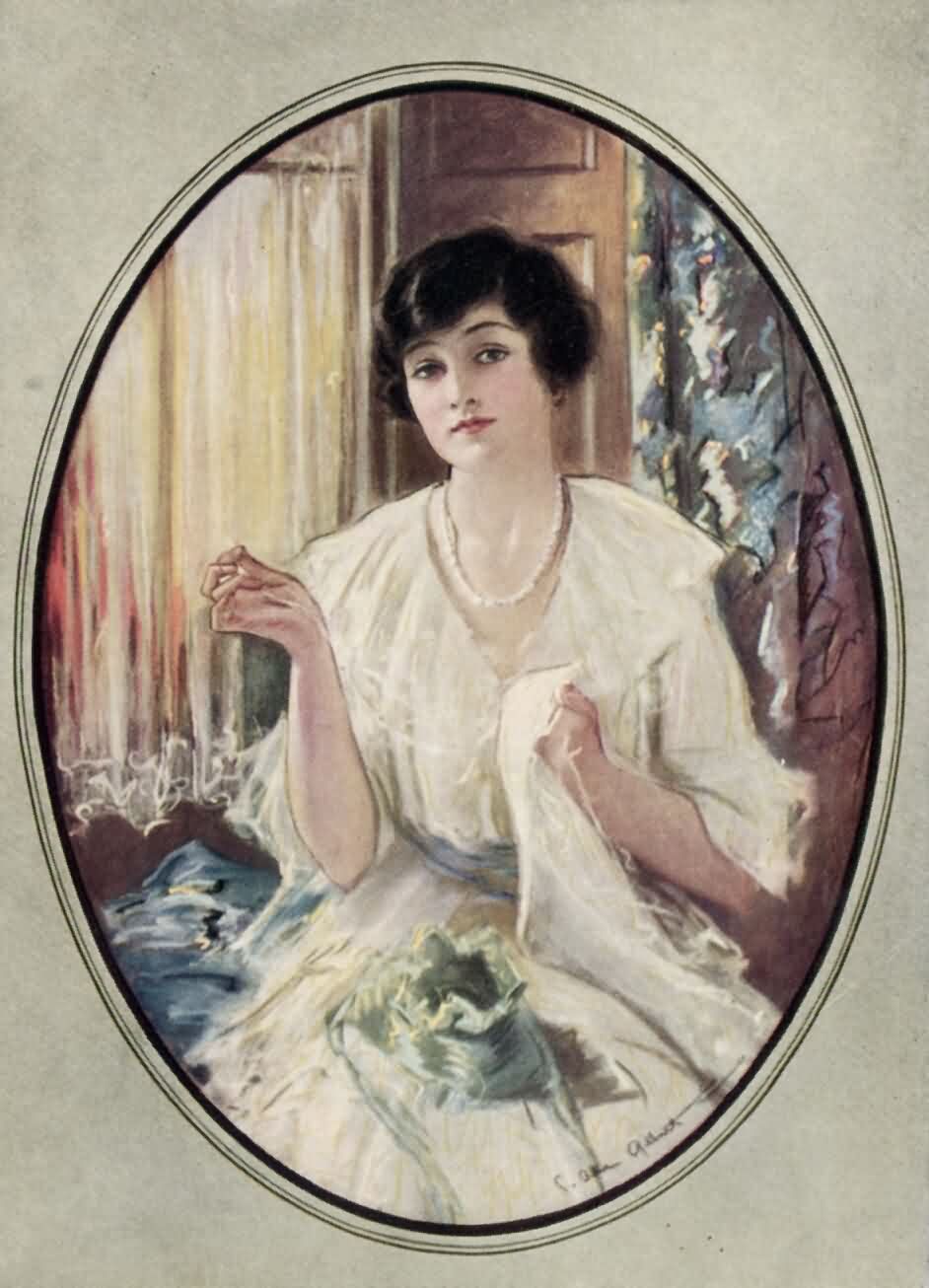We have now shown the different kinds of stitches used in
embroidery (here); the following illustrations show them used for
different patterns.
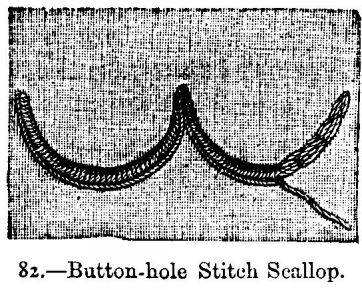
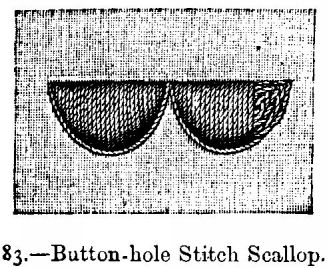
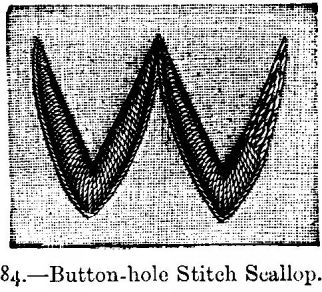
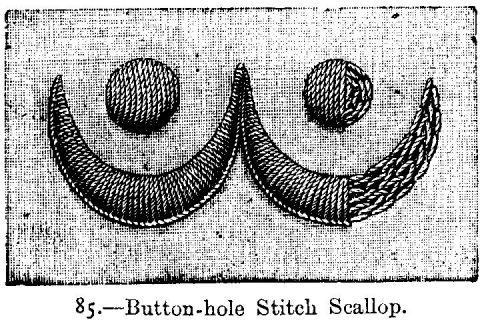
ILLUSTRATIONS 82 TO 85 (Different Button-hole Stitch
Scallops).--These scallops are prepared as above described.
Take care to have the stitches even and regular; the scallops must
be wide in the centre and very fine at both ends.
ILLUSTRATIONS 86 & 87 (Button-holes and
Eyelets).--This kind of embroidery is used only in round or
long patterns. Trace first the outline of the hole, cut away a
small round piece of material, not too close to the outlines (when
the button-hole is very small merely insert the point of the
scissors or a stiletto into the material), fold the edge of the
material back with the needle, and work the hole in overcast
stitch, inserting the needle into the empty place in the centre and
drawing it out under the outline. Some button-holes are worked
separately; sometimes they are in a row; if so, take care to begin
to work each button-hole at the place where it touches the next. In
the following button-holes the outside must be traced double, so as
to reach as far as the next one, but each button-hole is finished
at once. Illustration 86 shows a button-hole worked round in
button-hole stitch, 87 an eyelet-hole worked in overcast.
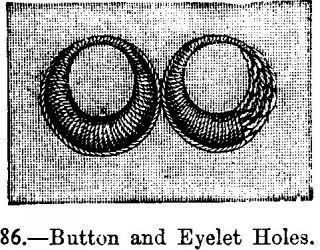
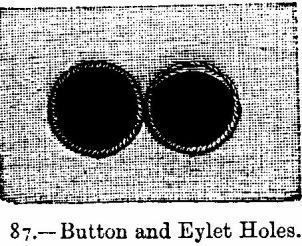
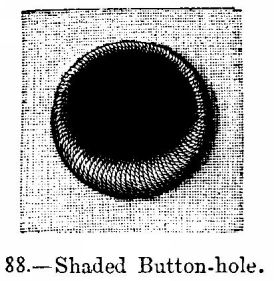
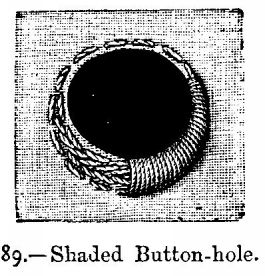
ILLUSTRATIONS 88 & 89.--Shaded button-holes are worked like
the others, only they are prepared, as can be seen in illustration
89, so as to mark the thickness. The stitches must gradually get
narrower or wider, and be worked very close to each other.
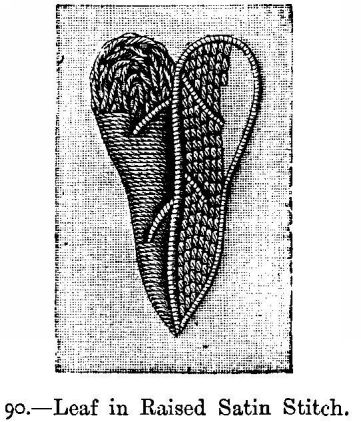
ILLUSTRATIONS 90 & 91 (Two Leaves in Raised Satin
Stitch).--In a leaf like the one seen in 90 work first the
outline and veining in overcast stitch; work one half of the leaf
in satin stitch, and the other half between the overcast outline
and veining in back stitch. The stem of a leaf is always worked
last.
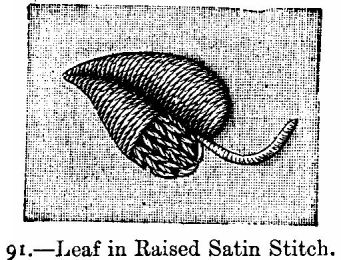
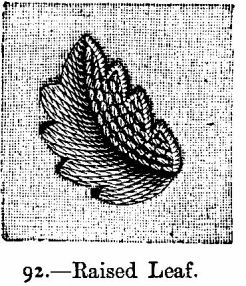
ILLUSTRATIONS 92 & 93 (Two Leaves in Satin Stitch and
Point de Plume).--For leaves like the one seen in 93 begin
with the veinings, then work the inner points, then the outer ones,
and lastly the raised spots in the centre. The leaf seen in 92 is
worked, one half in point de plume, the other half in back
stitch or point d'or.
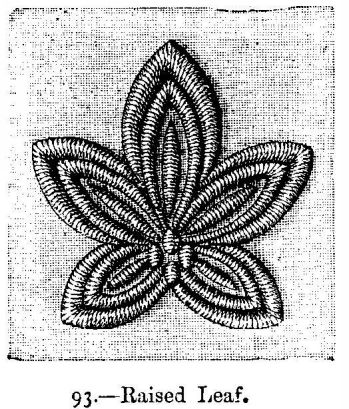
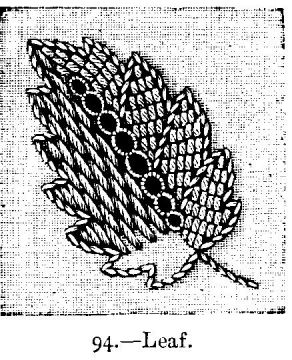
ILLUSTRATION 94.--- The outline of this leaf is embroidered in
overcast stitch; the open-work veining consists of eyelets; one
half of the leaf is worked in back stitch, the other half in a kind
of satin stitch worked without chain stitches underneath; [94]the
stitches are worked across the leaf, leaving between two stitches
an interval as wide as the stitch itself. The next row is then
worked in these intervals, and each stitch begins half-way up the
one before and after it.
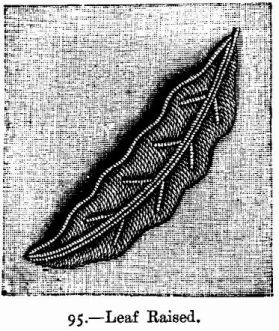
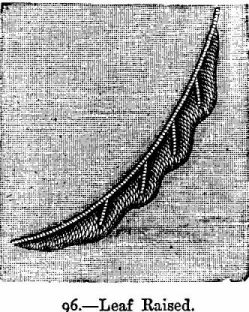
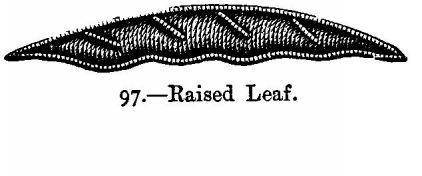
ILLUSTRATIONS 95 to 97 (Leaf in Raised
Embroidery).--This kind of embroidery is particularly
beautiful, as it is worked separately and sewn on the material with
an outline in very fine cotton, this produces the shade seen in 95
(see also illustrations 98 to 113). For such leaves work first one
half in overcast and satin stitch (illustration 96); the other half
is worked on a separate piece of material (see illustration 97);
cut away the material along the overcast outline, and fasten it on
the foundation material along the outline which forms the veining
on illustration 96.
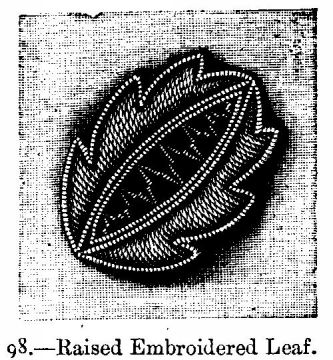
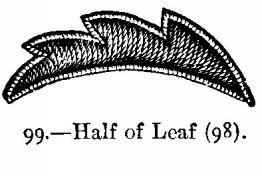
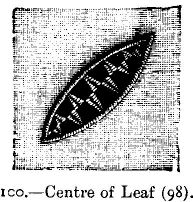
ILLUSTRATIONS 98 TO 100 show a similar leaf; both halves are
worked separately (see 99); the centre is worked in open lace
stitch. The latter (see No. 100) is traced, then make ladder
stitches across, work the outlines in overcast stitch, and cut away
the material underneath the ladder stitch. The cross stitches are
then worked in darning stitch with very fine cotton wherever two
threads meet.
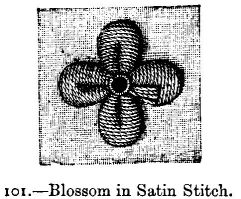
ILLUSTRATION 101 (Blossom in Satin Stitch).--The eyelet
is worked in overcast stitch, then work the upper part of the
blossom all in one piece as far as the beginning of the veining,
thence the blossom is worked in two halves.
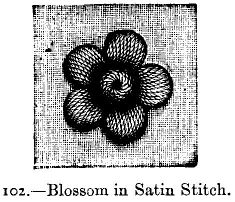
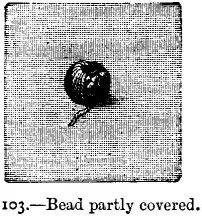
ILLUSTRATIONS 102 & 103 (Blossom in Satin
Stitch).--The raised centre of this flower is formed by a
bead, over which the embroidery is worked. When the leaves have
been worked one after the other, place a bead in the centre, left
free in such a manner that one hole lies on the material, and work
over the bead by inserting the needle into its upper hole, then
underneath the material, drawing it out above the material close to
the bead, and so on (see 103).

ILLUSTRATION 104 (Star Pattern in Satin Stitch).--The
centre, which forms a wheel, is worked first. Draw the threads
across the circle marked by an outline; in the centre they
are wound round, always taking one thread on the needle
and leaving the next thread under the needle.
The material underneath the wheel is only cut away when the rest of
the pattern has been embroidered.
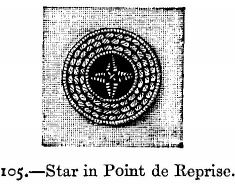
ILLUSTRATIONS 105 & 106 (Patterns in Back, Satin, and
Ladder Stitches).--The small star in the centre of No. 105 is
worked in point de reprise.
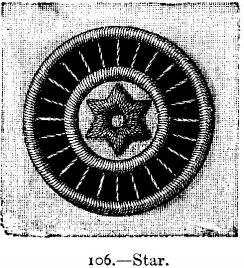
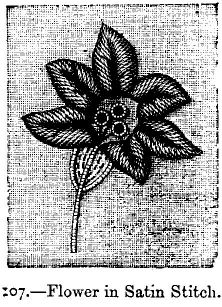
ILLUSTRATION 107 (Flower in Satin Stitch).--The fine
veinings are worked with fine black silk in point russe,
which renders the effect of the flower very beautiful.
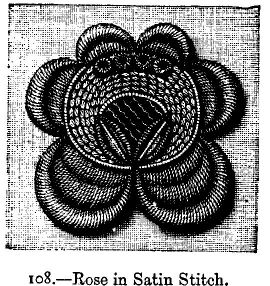
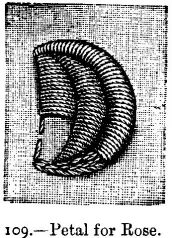
ILLUSTRATIONS 108 & 109 (Rose in Satin
Stitch).--No. 109 shows one petal larger than full size. The
outer circle only is prepared with chain stitches underneath, so as
to appear raised; the inner circles are worked flat. The centre of
the rose is embroidered in open work.
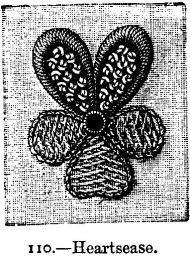
ILLUSTRATION 110 (Embroidered Heartsease).--For the
knotted stitch see No. 75. for the
point croisé see 71 and 72.
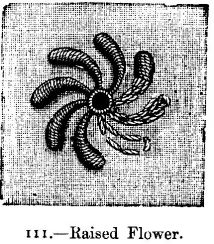
ILLUSTRATION 111 (Flower in Raised Satin Stitch).
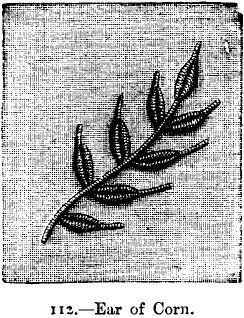
ILLUSTRATION 112 (An Ear of Corn in Point de
Minute).
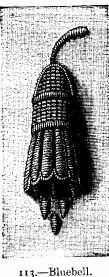
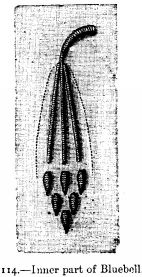
ILLUSTRATIONS 113, 114, & 116 (Bluebell in Raised Satin
Stitch).--This flower is worked partly in separate pieces, as
has been described. Illustration 116 shows
the raised part stretched out flat. When it is finished it is
fastened down along the dotted line on No. 114, which shows the
inner part of the flower.
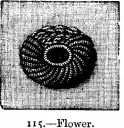
ILLUSTRATION 115 (Flower in Point de Minute).--This
stitch is here worked over a thick foundation of chain stitches.
For raised patterns it looks very well.
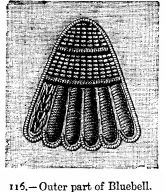
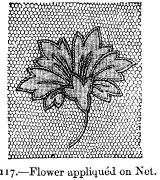
ILLUSTRATIONS 116 & 117 (Flower worked in
Appliqué).--To work in appliqué, two materials,
either similar or different, are needed. You can work either in
appliqué of muslin on muslin, or of muslin on net, or of net
on net. Muslin on Brussels net is the prettiest way of working in
appliqué; we will therefore describe it: the other materials
are worked in the same manner. Trace the pattern on the
muslin, fasten the latter on the net, and trace the outlines of the
pattern with very small stitches work them in overcast stitch with
very fine cotton, taking care not to pucker the material. The
veinings are worked in overcast. When the pattern has been
embroidered cut away the muslin round the outlines with sharp
scissors, so that the net forms the grounding (see No. 117). The
greatest care is required in cutting out the muslin to avoid
touching the threads of the net.
Please
do not post this pattern to another website. However, Please feel free
to post a link to this page:
http://www.knitheaven.com/vintagepatterns/embroiderypatternstitches.htm
